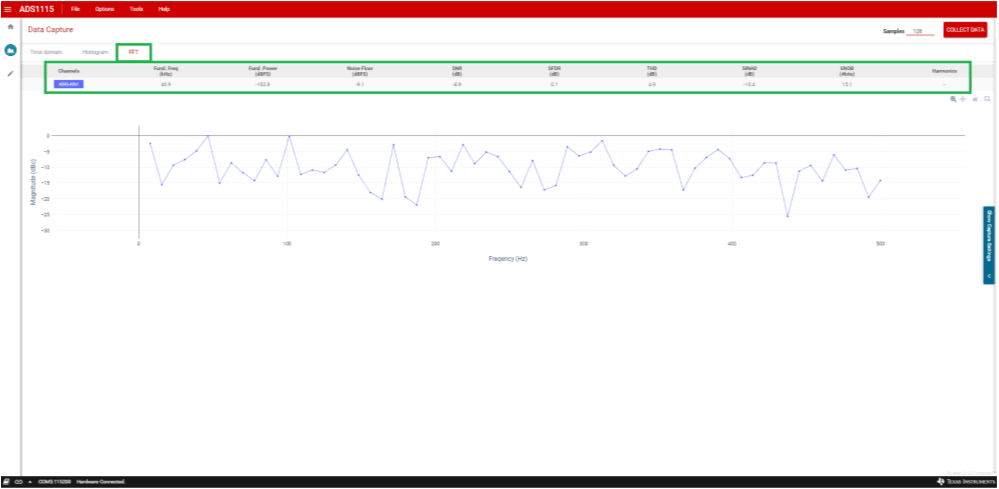SBAU362 March 2021 ADS1015 , ADS1115
5.2.2.1.2 FFT Statistics
The FFT plot (see Figure 5-16) displays the following statistics:
- Input Channels selected
- Fundamental frequency
- Fundamental power
- Noise floor
- SNR or signal-to-noise ratio
- SFDR or spurious free dynamic range
- THD or total harmonic distortion
- SINAD or signal-to-noise and distortion
- ENOB or effective number of bits
- Harmonics
 Figure 5-16 FFT Statistics
Figure 5-16 FFT Statistics